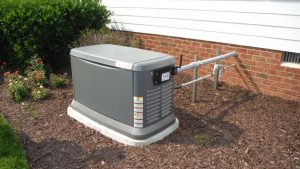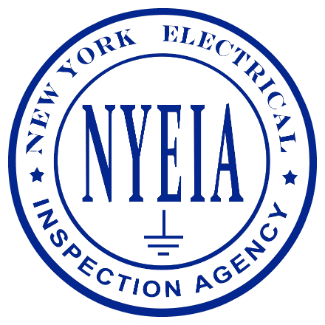 Minimum setback distances of permanently installed standby power systems, also referred to as standby generators, from combustible material (siding) has been interpreted differently over the years. This article explores the path through the 2020 Fire Code of New York State, the 2020 Building Code of New York State, their referenced standards, and the conclusion of what the minimum distance should be.
Minimum setback distances of permanently installed standby power systems, also referred to as standby generators, from combustible material (siding) has been interpreted differently over the years. This article explores the path through the 2020 Fire Code of New York State, the 2020 Building Code of New York State, their referenced standards, and the conclusion of what the minimum distance should be.
2020 Fire Code of New York State
Starting with the 2020 Fire Code of New York State, Chapter 12, Section 1201.1 states that Chapter 12 of this Code shall apply to the installation operation, maintenance, repair, retrofitting, testing, commissioning and decommissioning of energy systems used for generating or storing energy.
Section 1203.1.3 requires that the installation of standby power systems must be installed in accordance with the Building Code of New York State, NFPA 70 (which is the 2017 National Electrical Code), NFPA 110 (which is the 2016 Standard for Emergency and Standby Power Systems), and NFPA 111 (which is the 2013 Standard on Stored Electrical Energy Emergency and Standby Power Systems).
2020 Building Code of New York State
Chapter 27, Section 2702.1.3 in the 2020 Building Code of New York State requires that the installation of standby power systems be installed in accordance with the Fire Code of New York State, NFPA 70 (2017), NFPA 110 (2016), and NFPA 111 (2013).
NFPA 70 (2017) National Electrical Code
NFPA 70 is the 2017 National Electrical Code, and it does not address the minimum distance that standby power systems must be installed from combustible material.
NFPA 111 (2013)
NFPA 111, Chapter 7, Section 7.2.1 states that standby power systems must be installed as per the manufacturers specifications.
NFPA 110 (2016)
NFPA 110, Chapter 7, Section 7.1.3 states that Emergency Power Supply Systems (EPSS) must be installed in accordance with NFPA 110, the manufacture’s specifications, and the authority having jurisdiction. Section 7.10.1 states that the exhaust system shall be in accordance with NFPA 37 (which is the 2014 Standard for the Installation and Use of Stationary Combustion Engines and Gas Turbines)
NFPA 37 (2014)
NFPA 37, Section 4.1.4 states that engines and their weatherproof housings, if provided, that are installed outdoors must be located at least five (5) feet from openings in walls (such as windows, doors, and wall penetrations) and at least five (5) feet from structures having combustible walls. However, a minimum separation shall not be required where either of the following conditions exist:
- All walls of the structure that are closer than five (5) feet from the engine enclosure have a fire resistance rating of at least one (1) hour.
- The weatherproof enclosure is constructed of noncombustible materials and it has been demonstrated that a fire within the enclosure will not ignite combustible materials outside the enclosure.
Even though NFPA 37 removes any minimum separation if one of the above conditions exist, most, if not all, manufactures of standby power systems require a minimum separation of eighteen (18) inches between the standby power system and the building or structure.
Conclusion
So, in conclusion and according to the 2020 Fire Code of New York State and its referenced standards, if the enclosure or housing of the exterior standby power generator system is constructed with a non-combustible material (such as metal) and has been proven that a fire within the enclosure will not ignite combustible material outside the enclosure, a minimum of eighteen (18) inch separation is needed from combustible material. If the housing of the exterior standby power generator system is constructed with a combustible material such as plastic or a composite material, then at least five (5) feet of separation is needed from combustible material.
While some local codes and requirements may be different where you are, always check with your local building code official and read the manufactures specifications prior to installation.
